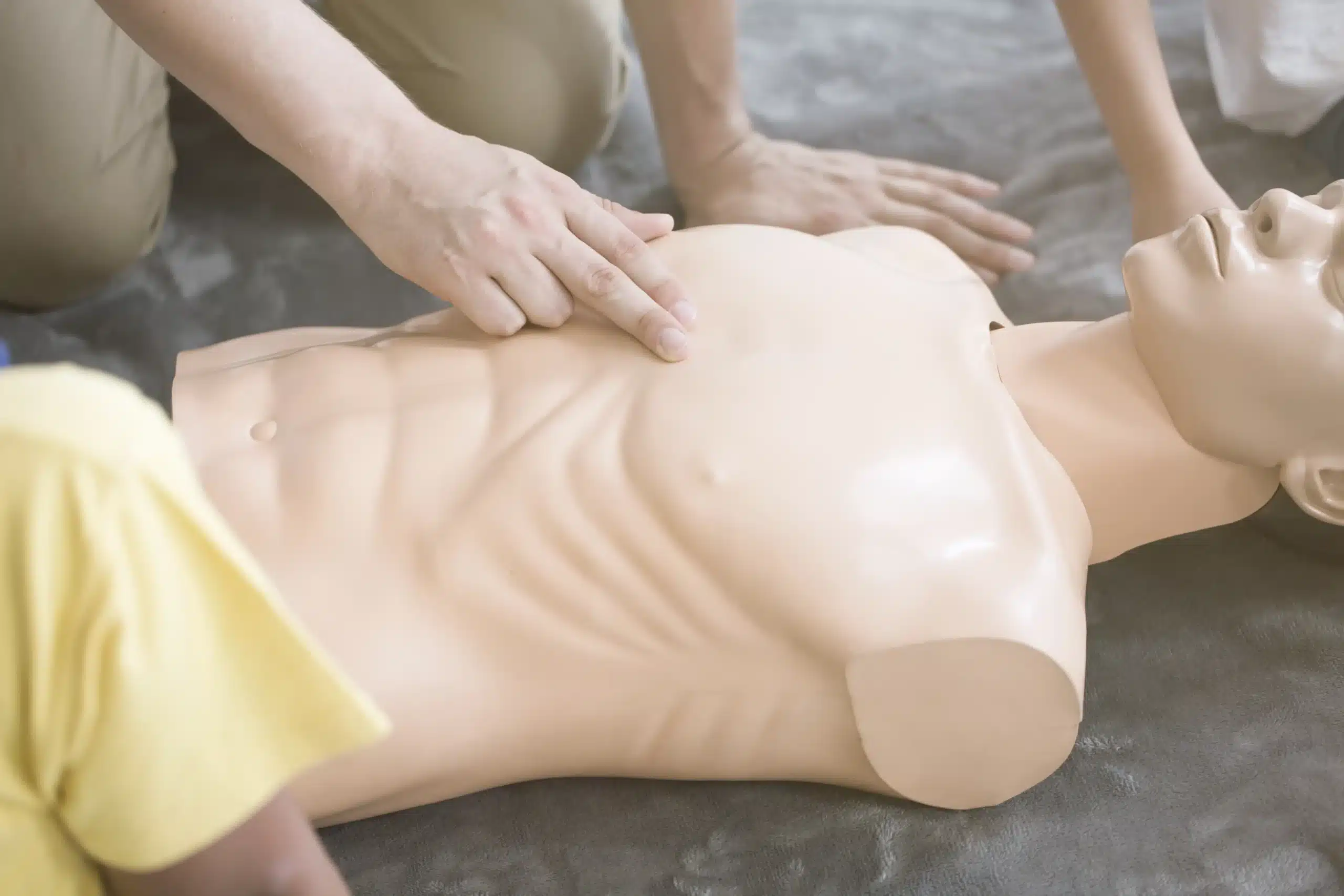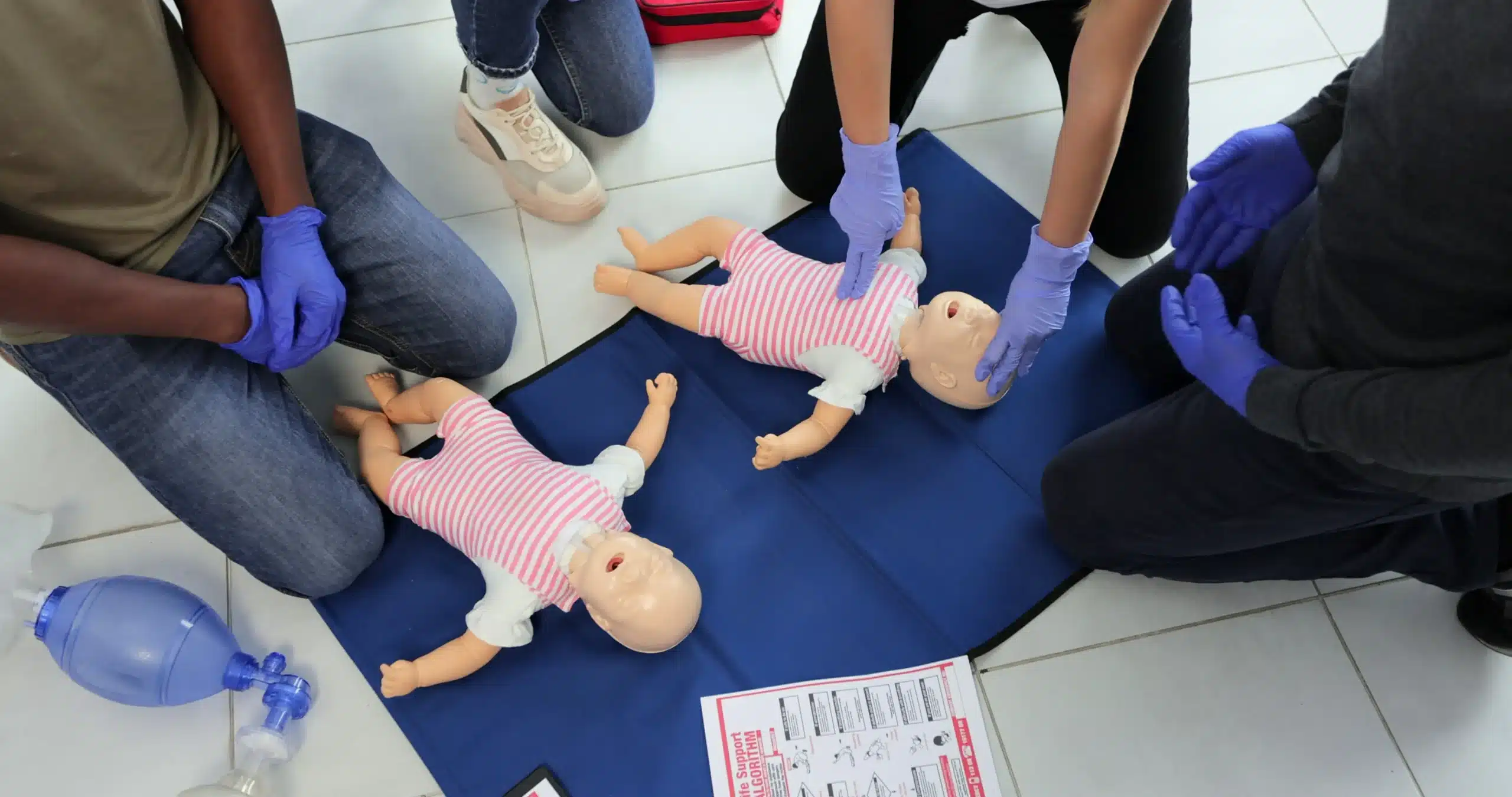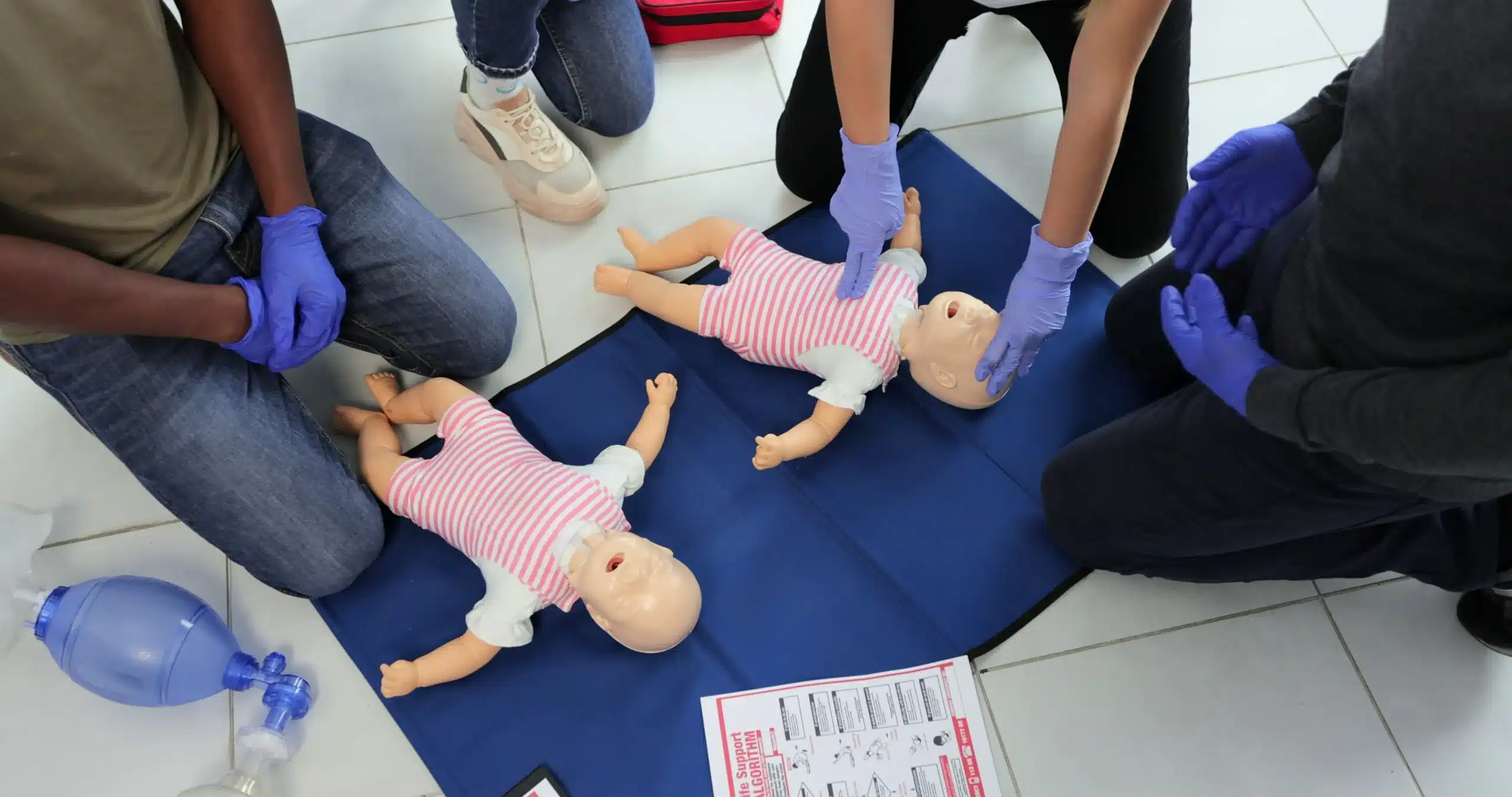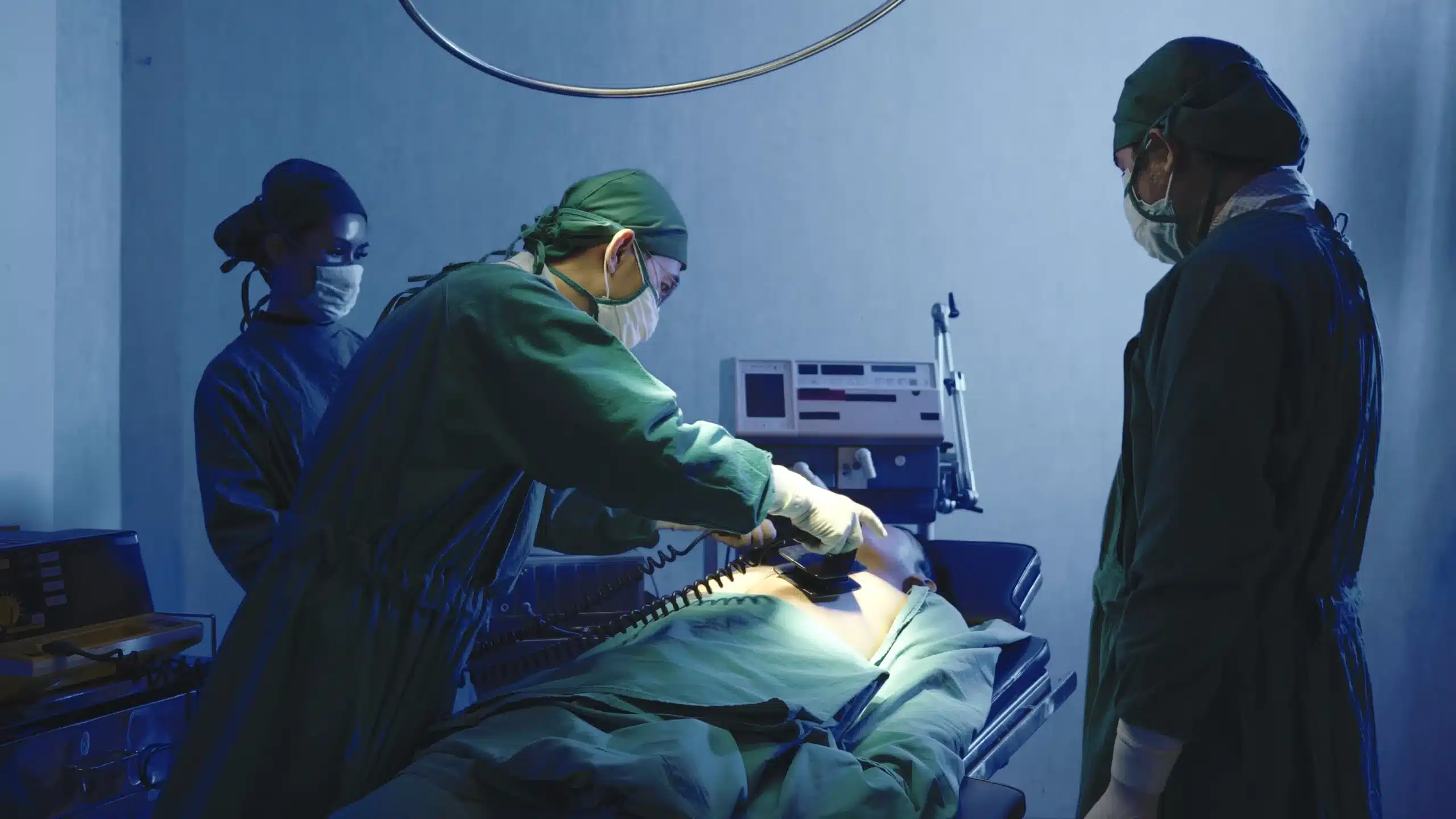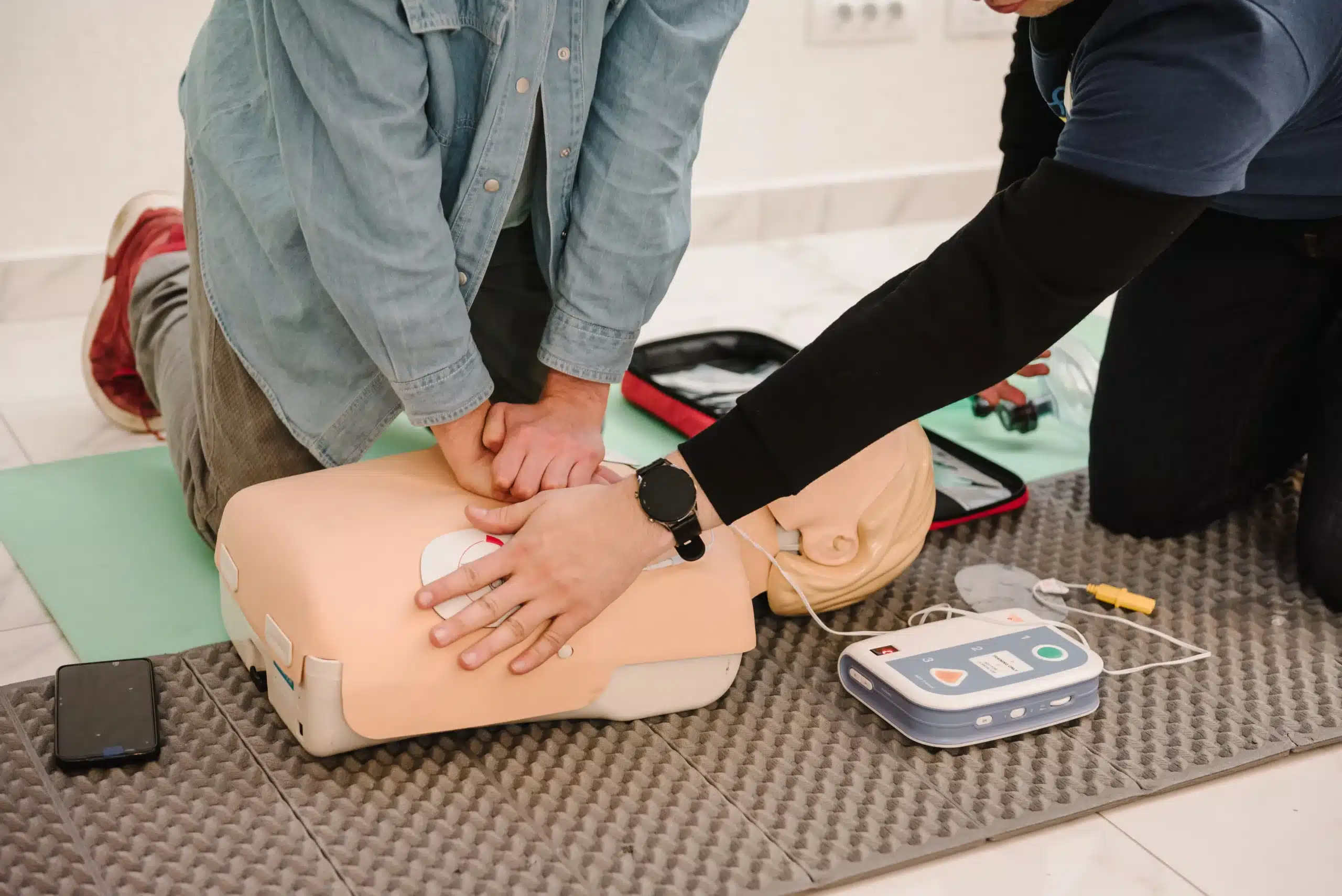In the face of a medical emergency, knowing CPR can transform you from a bystander into a life-saver. If you’re searching for CPR classes in Oakland, this guide will provide you with the essential information you need to make an informed decision. We’ll explore the various types of CPR training available, from basic CPR and First Aid to specialized courses for healthcare providers (BLS, ACLS, PALS). We’ll also highlight reputable CPR training providers in Oakland, including Safety Training Seminars, known for their comprehensive AHA-certified courses, and the American Red Cross, a trusted name in emergency preparedness. Plus, we’ll discuss the importance of hands-on practice, the certification process, and how to maintain your CPR skills over time. Let’s empower you to make a difference.
Key Takeaways
- CPR Training Empowers You: Learning CPR, whether for personal or professional reasons, equips you with the skills and confidence to make a real difference in medical emergencies.
- Find the Right Fit: From in-person classes to blended learning options, choose a CPR course format and training provider that aligns with your schedule, learning style, and specific certification needs.
- Stay Current to Save Lives: Maintain your CPR skills and certification through regular renewal courses and continuing education opportunities to ensure you’re always prepared to respond effectively in a crisis.
What is CPR?
What is CPR?
Cardiopulmonary resuscitation (CPR) is a life-saving technique used when someone’s heartbeat or breathing has stopped. It involves chest compressions, and sometimes rescue breaths. These actions maintain blood flow and oxygen to vital organs until professional medical help arrives. Learning CPR gives you the confidence to act quickly and effectively in these critical moments. For more information on CPR, explore these resources on common CPR myths.
Why CPR Skills Matter
Learning CPR is crucial. Effective bystander CPR can dramatically increase survival rates during cardiac arrest. Some research suggests it can double or even triple a person’s chance of survival. CPR training equips you with the skills to respond effectively in medical emergencies and fosters a sense of responsibility within your community. Knowing you can make a difference empowers you to act confidently and potentially save a life.
CPR Classes in Oakland
Finding the right CPR class in Oakland depends on your specific needs. Whether you’re a healthcare provider, need certification for your workplace, or simply want to be prepared for emergencies, several options are available. This section breaks down the different types of CPR classes offered in Oakland.
BLS for Healthcare Providers
Healthcare professionals, such as doctors, nurses, and EMTs, require specialized training. The Basic Life Support (BLS) certification course from the American Heart Association covers core life-saving skills, including CPR, using an AED, and relieving choking. These courses meet the specific requirements for healthcare providers and often include advanced techniques. Safety Training Seminars offers these courses, contributing to a more prepared and resilient community.
Heartsaver CPR AED
Heartsaver CPR AED courses are designed for anyone who wants to learn CPR and how to use an automated external defibrillator (AED). This course is suitable for those who are not healthcare professionals but still want to be equipped to handle emergencies. The American Red Cross offers this training in Oakland for individuals, community groups, and workplaces. They also offer specialized programs for schools and educators. Learning these essential skills can empower you to respond confidently in a crisis.
Pediatric CPR and First Aid
For parents, caregivers, teachers, and anyone working with children, Pediatric CPR and First Aid training is essential. These courses focus on the specific techniques for infants and children. CPR Certification Oakland offers American Heart Association certified CPR courses that include pediatric CPR and first aid, available in both online and in-person formats. These specialized skills can make a critical difference in emergencies involving young children.
First Aid/CPR Combo Courses
Combining CPR and First Aid training into one course is a convenient and cost-effective way to gain comprehensive life-saving skills. These combo courses cover everything from treating minor injuries to performing CPR in emergency situations. CPR Certification Oakland offers a combined CPR and First Aid class, making it accessible to a wider range of people. This comprehensive approach equips you to handle a broader spectrum of emergencies.
Top Oakland CPR Certification Providers
Finding the right CPR certification provider is key to receiving quality training. Here are a few reputable options in Oakland:
Safety Training Seminars
Safety Training Seminars offers a comprehensive range of American Heart Association (AHA) courses, including BLS, ACLS, PALS, CPR and First Aid. They prioritize high-quality instruction and offer competitive prices. AHA certification ensures your training meets the standards set by the American Heart Association, reflecting the latest scientific guidelines. They also offer other helpful courses like EMSA Child Care Health & Safety training and discounts for group classes. For those seeking the best value, they also have a low price guarantee.
American Red Cross
The American Red Cross is a well-known provider of CPR and First Aid training in Oakland. They offer classes for individuals, first responders, and organizations. The Red Cross also provides a specialized program for schools, covering both staff and students. Their training is supported by online resources and manuals for easy access to additional information.
CPR Certification Oakland
CPR Certification Oakland provides AHA-certified CPR and First Aid classes and boasts an impressive track record. They offer classes throughout the Bay Area, including Oakland, with on-site training available for groups. You can find CPR-only classes or combined CPR/First Aid courses to fit your specific needs.
Oakland Fire Department
The Oakland Fire Department may also offer CPR training programs. Contacting the department directly or checking their website is the best way to find the most up-to-date information on course offerings and schedules. Often, local fire departments can be a valuable resource for CPR training within the community.
Choose the Right CPR Class
Picking the right CPR class depends on your needs. Are you a healthcare provider? Do you need it for work? Or are you learning this life-saving skill for yourself? Let’s break down the options so you can find the perfect fit.
Healthcare Professionals
Healthcare providers, like doctors, nurses, and EMTs, typically require a higher level of CPR certification. Look for courses like Basic Life Support (BLS) through the American Heart Association (AHA). These courses cover advanced techniques for medical settings. Safety Training Seminars offers a range of AHA courses, including BLS, ACLS, and PALS, in Alameda.
General Public
If you’re learning CPR for personal reasons, such as being prepared for emergencies at home, a Heartsaver CPR AED course might be right for you. These courses cover CPR fundamentals and how to use an AED. CPR training gives you the confidence to act when seconds count.
Workplace Requirements
Some workplaces require CPR certification. Often, a basic CPR and First Aid course will be enough. Check with your employer to understand their requirements. While convenient, online CPR training doesn’t always offer sufficient hands-on practice. In-person training develops the muscle memory and confidence to perform CPR effectively.
Industry-Specific Programs
Some industries, like childcare or construction, have specific CPR training requirements. Childcare providers, for instance, might need extra training in pediatric CPR and First Aid. Make sure the course you choose meets your industry’s requirements. CPR certifications expire. Many providers, including Safety Training Seminars, offer CPR renewal courses to keep your skills and certification current. These cover the latest guidelines and best practices.
CPR Class Costs in Oakland
Knowing the price range for CPR classes helps you budget effectively. Several factors influence the final cost, including the course type, the training provider, and whether you choose individual or group instruction. Let’s break down the typical costs associated with CPR certification in Oakland.
Average Pricing
In Oakland, a standard CPR class costs around $64.95, according to CPR Certification Oakland. Adding First Aid training typically increases the total to about $84.95. These prices can vary, so check directly with your chosen provider. Prioritizing American Heart Association (AHA) certified courses ensures you receive high-quality training that meets industry standards. Safety Training Seminars offers a low price guarantee for their courses.
Discounts and Promotions
Many organizations offer various discounts and promotions to make CPR training more accessible. The American Red Cross frequently updates its website with the latest deals. Checking their CPR class page for current promotions before registering can save you money. Also, ask your chosen training center about potential discounts for students, seniors, or other groups.
Group Rates
If you’re organizing training for a group, explore group discounts to reduce the cost of CPR certification. Safety Training Seminars offers competitive group rates for various courses, including BLS, ACLS, PALS, CPR, and First Aid. This is a smart choice for businesses, community groups, or families learning these essential lifesaving skills together.
Class Formats and Duration
Finding the right CPR class often depends on your learning style and schedule. Luckily, there are several options available, from traditional in-person training to online courses and blended learning formats. Understanding the pros and cons of each will help you choose the best fit.
In-Person Training
In-person CPR training offers a hands-on learning experience guided by a certified instructor. This format allows for immediate feedback, personalized instruction, and the opportunity to practice your skills in a realistic environment. You’ll work with training manikins and learn alongside other students, which can enhance the learning process through observation and interaction. This direct interaction is invaluable for building confidence and mastering the physical skills required for effective CPR.
Online Options
Online CPR certification provides a convenient alternative for those with busy schedules or limited access to in-person classes. These courses typically involve video instruction, interactive modules, and online assessments. While online options offer flexibility, it’s important to check whether your employer or certifying body accepts online-only certifications. Some organizations may require in-person skills verification. Online courses can be a great way to learn the basics or refresh your knowledge.
Blended Learning
Blended learning combines the best of both worlds. This format typically involves completing online modules covering the theoretical aspects of CPR, followed by an in-person skills session. The online portion allows you to learn at your own pace, while the in-person session provides crucial hands-on practice and feedback from a certified instructor. This approach can be a highly effective way to learn CPR, offering both flexibility and practical application.
Flexible Scheduling
Many training providers understand that people have busy lives, so they offer a variety of scheduling options. Safety Training Seminars offer weekend classes, evening sessions, and intensive one-day courses to accommodate different schedules. When choosing a class, consider your availability and preferred learning pace. Whether you prefer a structured classroom setting or the flexibility of online learning, there’s a CPR class format to suit your needs.
What to Expect
Getting ready for your CPR class? Here’s a preview of what you’ll experience, from hands-on practice to the certification process. Knowing what lies ahead can help you feel prepared and confident on class day.
Hands-on Practice
While online CPR classes offer a convenient introduction, in-person training is crucial for developing the essential hands-on skills and muscle memory needed for effective CPR. You’ll work with mannequins to practice chest compressions, rescue breaths, and proper hand placement. This hands-on experience builds your confidence and prepares you to respond effectively in a real emergency.
Written Exams
Most CPR courses include a written exam to assess your understanding of the material. These exams typically cover topics like recognizing the signs of a heart attack, the steps of CPR, and how to use an AED. The questions focus on practical application, not rote memorization. The goal is to ensure you can confidently apply your new CPR skills.
Certification Process
Upon successful completion of the course and exam, you’ll receive your CPR certification card. AHA certification is widely recognized and validates your skills and knowledge, demonstrating your readiness to assist in medical emergencies. Make sure to keep your certification current to maintain your qualifications.
Scenario Training
Many CPR classes incorporate scenario training to simulate real-life emergencies. This practical experience helps you apply your skills under pressure and reinforces decision-making in critical situations. Research shows that real-time feedback during these scenarios significantly improves CPR performance. You’ll learn to assess the situation, make quick decisions, and perform CPR effectively in a variety of potential emergencies.
Maintain Your CPR Certification
CPR skills are like any other—they fade if you don’t use them. Staying current with your CPR certification isn’t just a good idea; it’s often a job requirement. Regularly refreshing your knowledge and skills ensures you’re prepared to act quickly and confidently in an emergency.
Renewal Requirements
CPR certifications typically expire every two years. This is because guidelines and best practices can change, and regular recertification ensures you stay informed. Check your certification card for the expiration date and register for a renewal course before it lapses.
Continuing Education
Even if your certification isn’t due for renewal yet, consider taking advantage of continuing education opportunities. Many CPR training providers offer refresher courses and workshops to brush up on your skills and learn about any updates to CPR techniques. For example, Bay Area CPR offers renewal courses covering the same core material as the initial certification.
Keep Skills Current
While convenient, online CPR courses often lack the hands-on component crucial for truly mastering CPR. In-person training lets you practice chest compressions, rescue breaths, and other essential techniques under the guidance of a certified instructor. This builds muscle memory and confidence, so you can react effectively in a real-life emergency. Consider supplementing online learning with in-person practice sessions. This will keep your skills sharp.
Find Your Best Oakland CPR Class
So you’re ready to sign up for a CPR class—fantastic! Choosing the right class is an important step. Here’s what to consider when making your decision:
Evaluate Provider Credentials
First, look at the training provider’s credentials. AHA certification, offered by providers like Safety Training Seminars, is a strong indicator of quality. AHA-certified courses, from basic CPR to advanced life support (ACLS/PALS), offer standardized, up-to-date training recognized by employers across the country. This ensures your training meets industry standards and will be widely accepted.
Consider Learning Preferences
Think about how you learn best. Online CPR classes offer a convenient introduction to the material, but in-person training is essential for developing hands-on skills and the muscle memory you’ll need in a real emergency. Some organizations offer blended learning, combining online modules with in-person skills sessions. This approach lets you benefit from the convenience of online learning while still getting crucial hands-on practice.
Read Reviews
Before committing to a class, see what other students are saying. Positive feedback can give you a sense of the training’s effectiveness and the instructor’s ability to clearly explain important concepts. Learning CPR, whether for personal or professional reasons, gives you the skills to respond effectively in medical emergencies, so choosing a reputable class is key.
Additional Resources
Many organizations offer resources beyond the classroom setting. Look for providers that offer online materials, manuals, or refresher courses to help you maintain your skills after completing your initial training. These resources can be invaluable for reinforcing what you’ve learned and staying up-to-date on the latest CPR guidelines. For example, the Red Cross offers a wealth of online information and resources to supplement their in-person training.
Related Articles
- Debunking Common CPR Myths for Life-Saving Confidence
- Why CPR is Essential for Saving Lives
- CPR Training in Oakland: Your Guide to Certification
- BLS for Healthcare Providers in Oakland: A Practical Guide
- Online CPR Classes in Berkeley: Your Complete Guide
Frequently Asked Questions
What’s the difference between CPR and First Aid?
CPR focuses on restoring breathing and circulation when someone’s heart has stopped or they’re not breathing. First Aid addresses a wider range of injuries and illnesses, from minor cuts and burns to more serious situations like choking or allergic reactions. While distinct, they often complement each other in emergency situations.
How do I choose the right CPR class for me?
Consider your specific needs. Healthcare providers need courses like BLS, while the general public might opt for a Heartsaver CPR/AED course. If your workplace requires CPR certification, check with your employer for their specific requirements. Also, think about your learning style. Do you prefer in-person instruction or the flexibility of online learning? Many providers offer both options, including blended learning that combines online modules with in-person skills sessions.
How much do CPR classes cost in Oakland?
Prices vary depending on the provider and the type of course. Basic CPR classes typically range from $50 to $90, while adding First Aid training usually increases the cost. Look for providers offering discounts for groups, students, or seniors. Some organizations, like Safety Training Seminars, even offer a low-price guarantee.
What can I expect during a CPR class?
Expect a combination of instruction and hands-on practice. You’ll learn the steps of CPR, how to recognize the signs of a heart attack or stroke, and how to use an AED. You’ll practice on mannequins to develop the muscle memory and confidence needed to perform CPR effectively. Most classes also include a written exam to assess your understanding of the material.
How often do I need to renew my CPR certification?
Most CPR certifications are valid for two years. It’s essential to renew your certification before it expires to maintain your skills and ensure you’re up-to-date on the latest guidelines. Many providers offer renewal courses, often shorter than the initial certification course.



